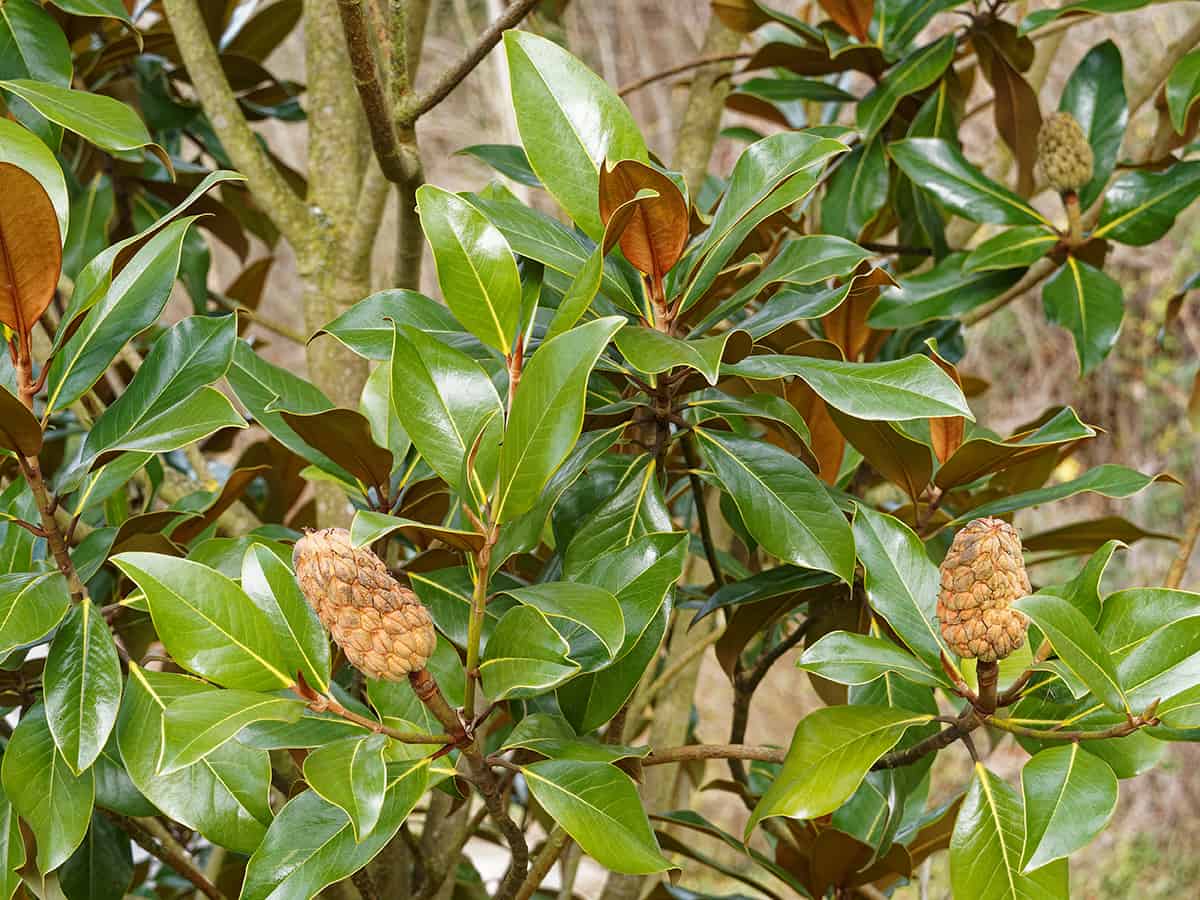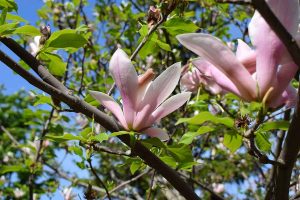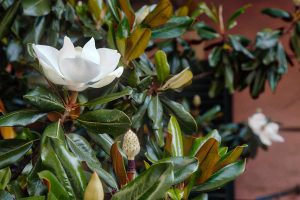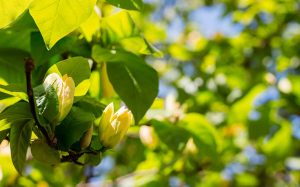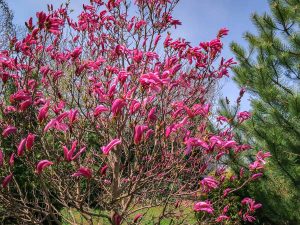Magnolia trees are magnificent specimens, with glossy green leaves and an abundant display of flowers produced each spring. If the foliage on your magnolia tree is turning brown then it could be a completely natural part of the tree’s life cycle, or it could be cause for concern.
To figure out if you need to make changes to help the tree, you’ll first need to do some problem-solving to find the root of the problem.
Table of Contents
Brown Magnolia Leaves in Fall
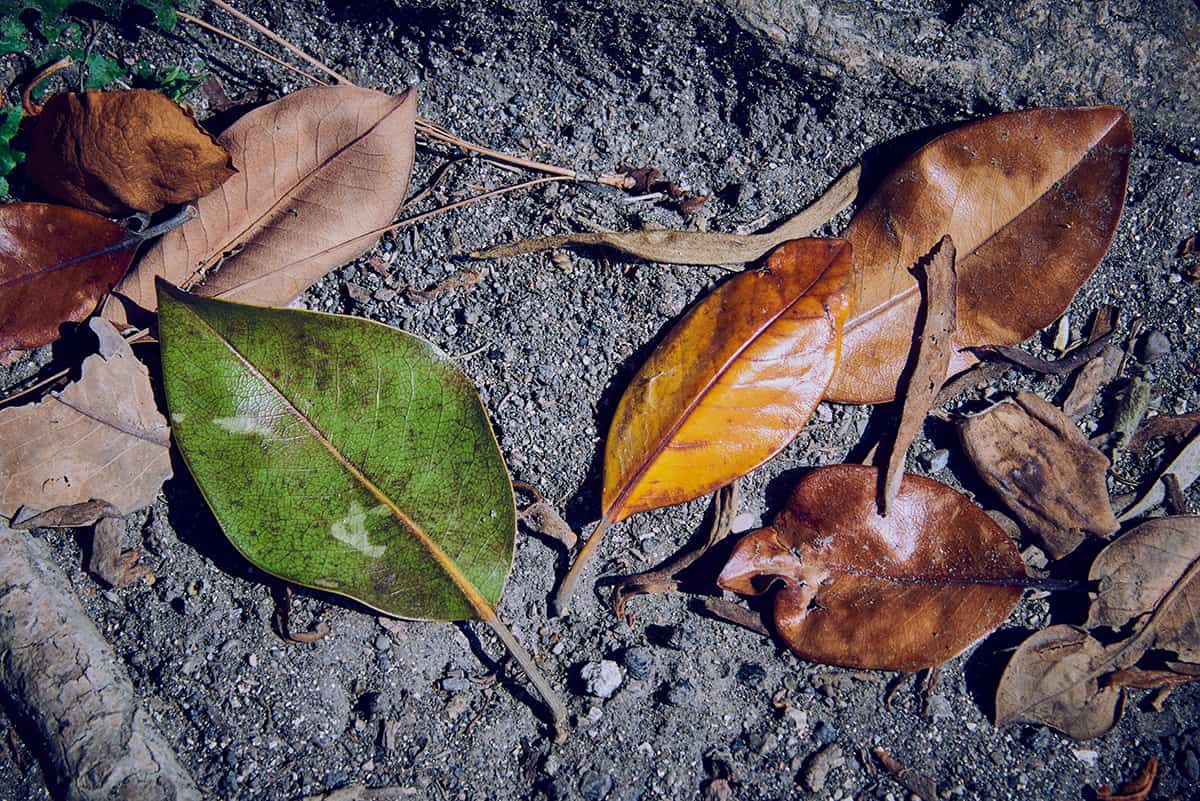
Magnolia trees can be deciduous or evergreen. Deciduous magnolias, such as the Cucumber Tree Magnolia (Magnolia acuminata), will experience a shedding of the leaves every fall. In anticipation of this, the foliage will first start to fade to yellow or tan while it is still on the tree, before turning brown and then falling from the ground.
This is a normal part of the magnolias life cycle and is nothing to worry about. New healthy leaves will emerge the following spring. Evergreen magnolias, like the Southern Magnolia (Magnolia grandiflora), do not lose their leaves in fall, so if you have a lot of leaves turning yellow during this season on an evergreen magnolia, then this may indicate a problem.
Are Brown Magnolia Leaves Normal?
Magnolia leaves can be medium bright green or dark green, and they sometimes have brown felt-like undersides. A magnolia tree that has leaves that are completely brown are typically not normal unless the tree is deciduous and it is in fall. Evergreen magnolias do shed their leaves continuously throughout the year, so a few brown leaves on evergreen magnolias can be normal.
In this case, it is the older leaves that are being shed, and these will be getting replaced with new growth. If there are only a handful of magnolia leaves turning brown, and you can see new growth on the tree, then this is normal and you have no need to worry. If there are a lot of leaves turning brown, and there is no evidence of new growth, then this is a sign that your magnolia tree is struggling.
Why do Magnolia Leaves Turn Brown?
Frost damage
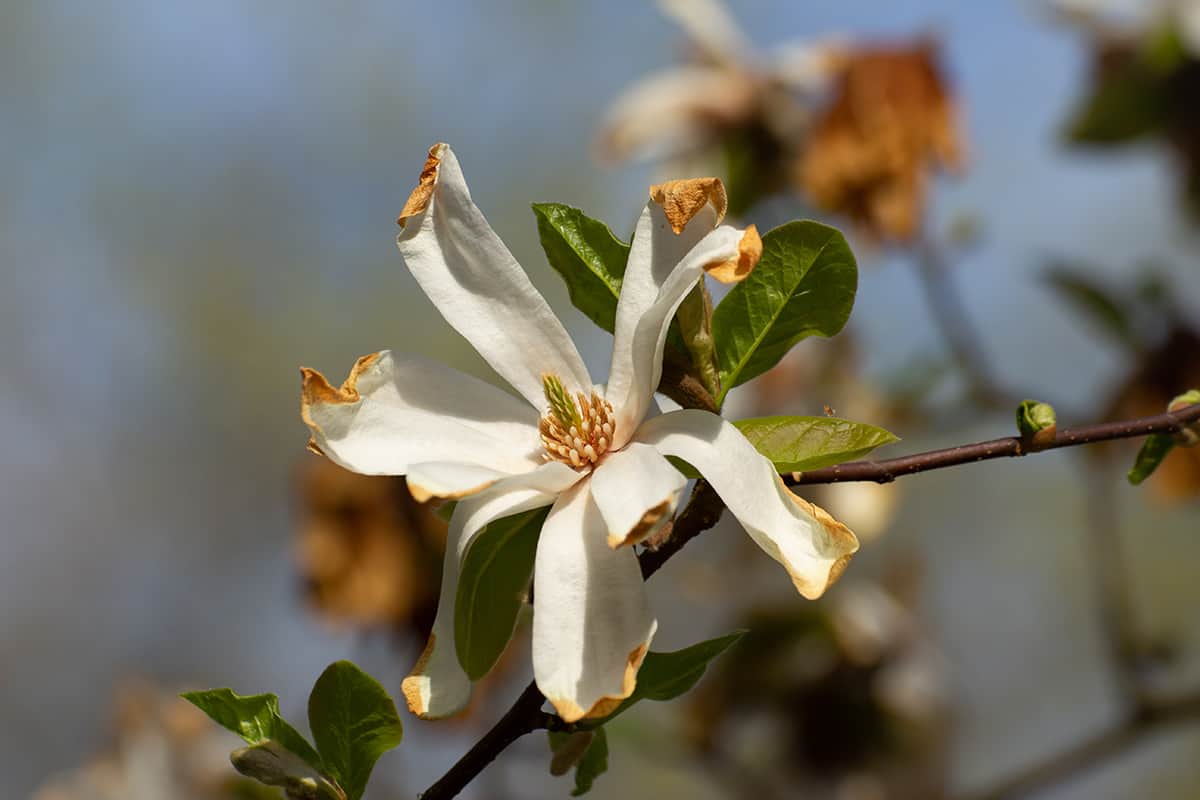
If your magnolia tree has brown foliage in spring then this could be a result of frost damage. Fortunately, this is a short-lived problem that does not usually signal the death of a magnolia. As the brown leaves drop from the tree, new growth will emerge to replace the leaves that died due to frost.
There is nothing you can do to repair frost-damaged leaves, however, you can take precautions to protect them in the future. Plant magnolias in a protected position near tall fences or other trees, or wrap them in burlap overnight during cold snaps.
Drought stress
A common sign of drought stress on magnolias is leaves turning brown. If you have experienced a long period of dry weather and have not been supplementing the tree with additional water, then this could be the reason for the brown leaves.
Magnolias are not drought-tolerant and need moist roots to survive. Whether or not the tree will be able to recover will depend on the extent of the drought stress. Generously water the tree every few days and wait to see if it bounces back with new foliage growth.
Poor drainage
Magnolias are thirsty trees but they don’t grow well in waterlogged soils. If the soil around your magnolia appears wet and compacted, it may not be draining well. Poor drainage teamed with a wet season can cause the roots of the magnolia to rot, which starves them of the nutrients and moisture they need.
This can cause leaves to turn brown and look dried out. If there are some healthy roots remaining, the tree may recover if the soil is amended to improve drainage. If the root damage is too extensive, the tree may not survive.
Sunburn
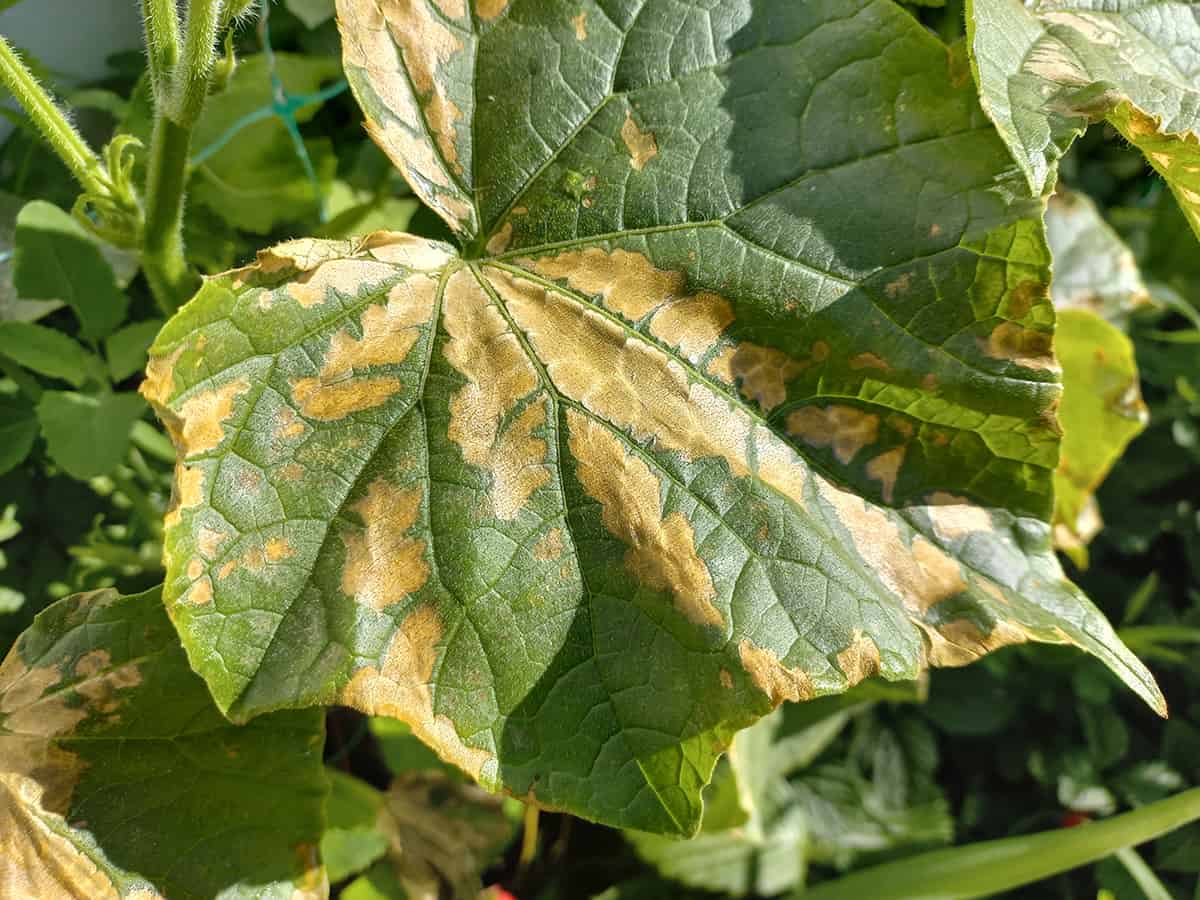
Most, but not all, magnolias enjoy being in full sun or partial shade. However, they can experience sunburn or leaf scorch if they are in full sun and their soil is not moist enough. Maintaining moist soil will help to prevent issues with sunburn in hot climates where the tree has no shade.
Low light
Magnolia trees prefer full sun or partial shade. If they are being grown in a position that is heavily shaded, the leaves will begin to turn brown and the growth of the tree will be significantly reduced. Move the tree to a brighter aspect to allow the tree to recover.
Iron deficiency
Iron deficiency can be a problem in magnolia trees, and one of the main symptoms of this is browning leaves. If the conditions your tree is growing in all seem fine, for example, the soil is not dried out or is too wet, and it is getting an adequate amount of light, then iron deficiency could be the cause of the issue.
Monitor the leaves, and take note of how quickly they fall from the tree after they change color. If they drop immediately after turning brown, this is an indication of iron deficiency. You can have your soil tested to confirm this, and make amendments to increase iron levels.
Alkaline soil
Magnolias are quite adaptable to different soil types, but they prefer to be grown in soil which is slightly acidic. If your soil is alkaline, this could cause problems for the tree, which include leaves turning brown. You can test your soil pH with a testing kit, and make amendments as indicated to lower the pH of the soil.
Strong winds
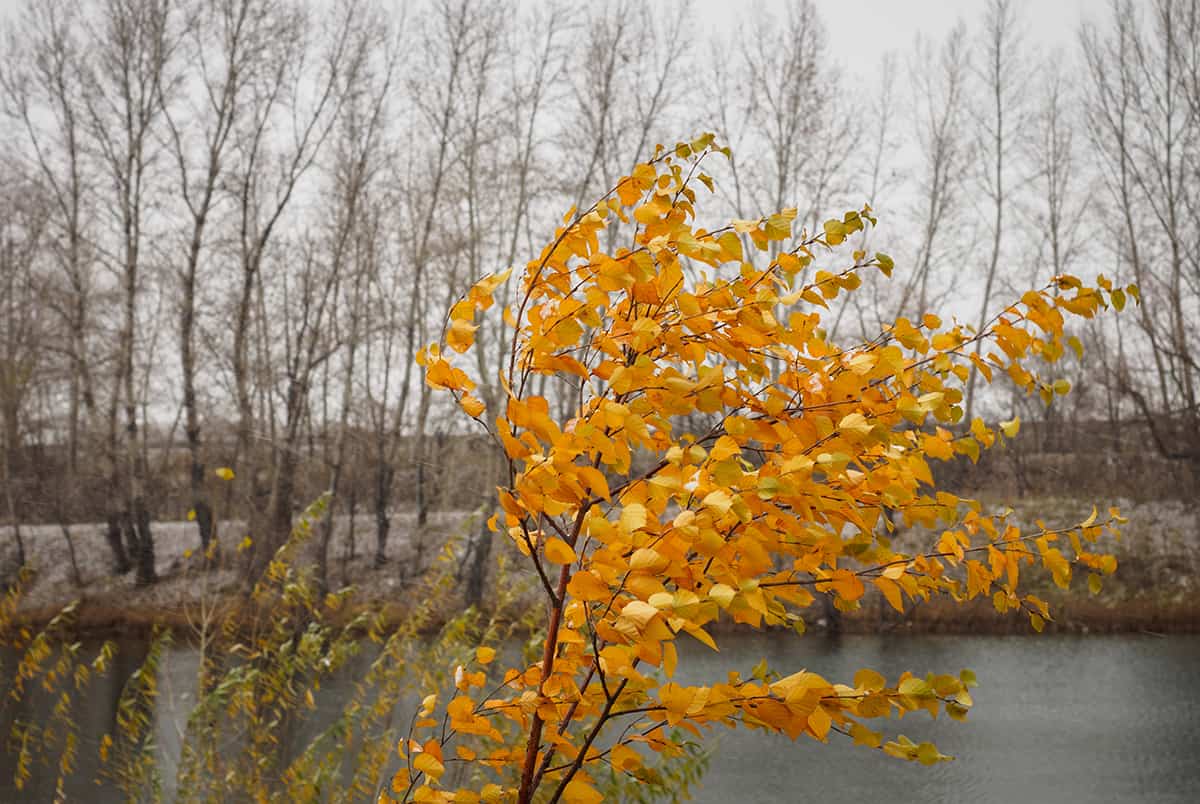
Harsh winds can dry out the leaves on a magnolia, which can cause them to turn brown. While you cannot save the leaves which have died, you can help to prevent it from happening again by positioning the tree in a sheltered spot.
If the tree is young, you may be able to transplant it to a more suitable spot. Mature magnolias should not be moved, so it’s important to plant trees in appropriate places when young.
